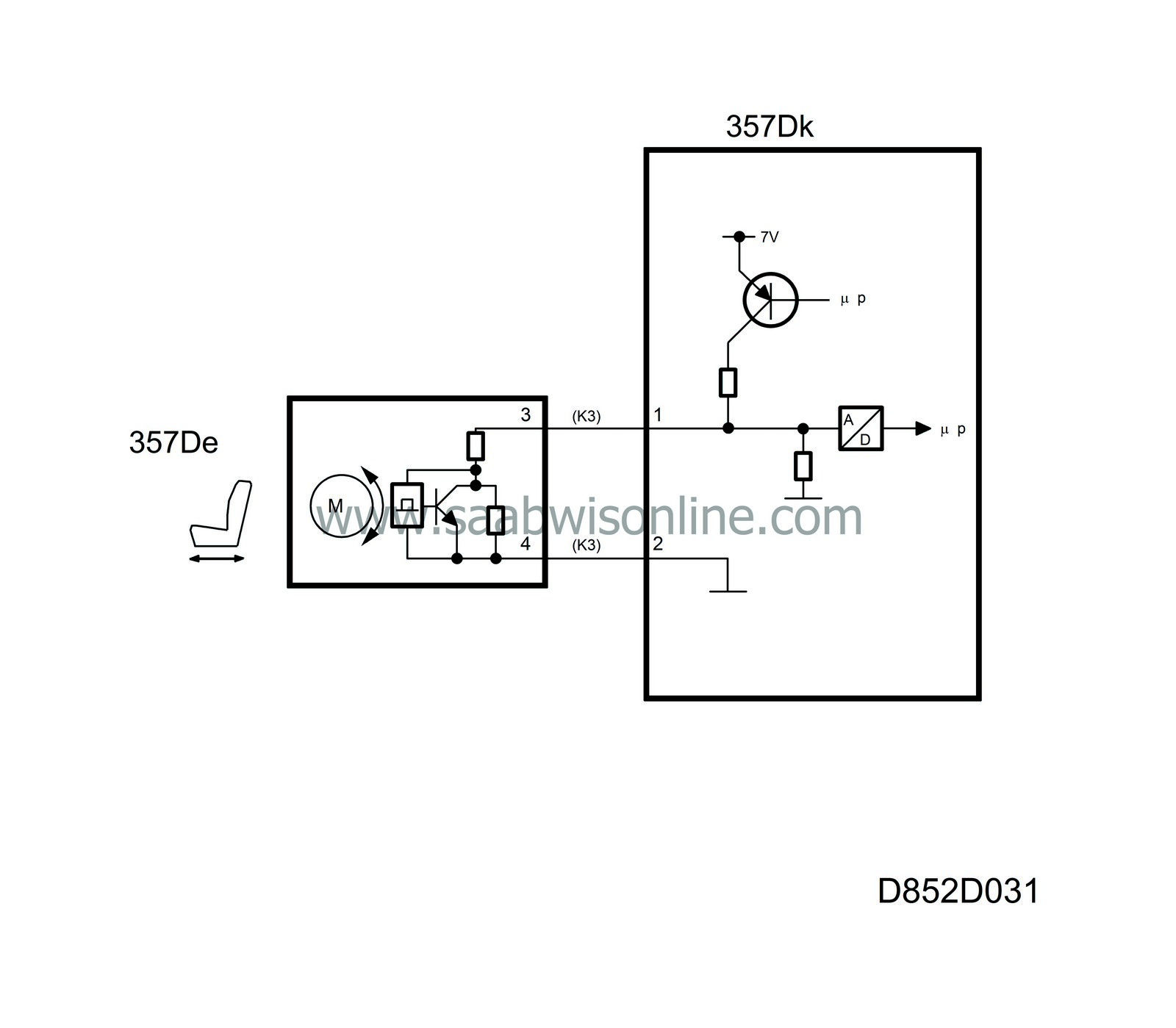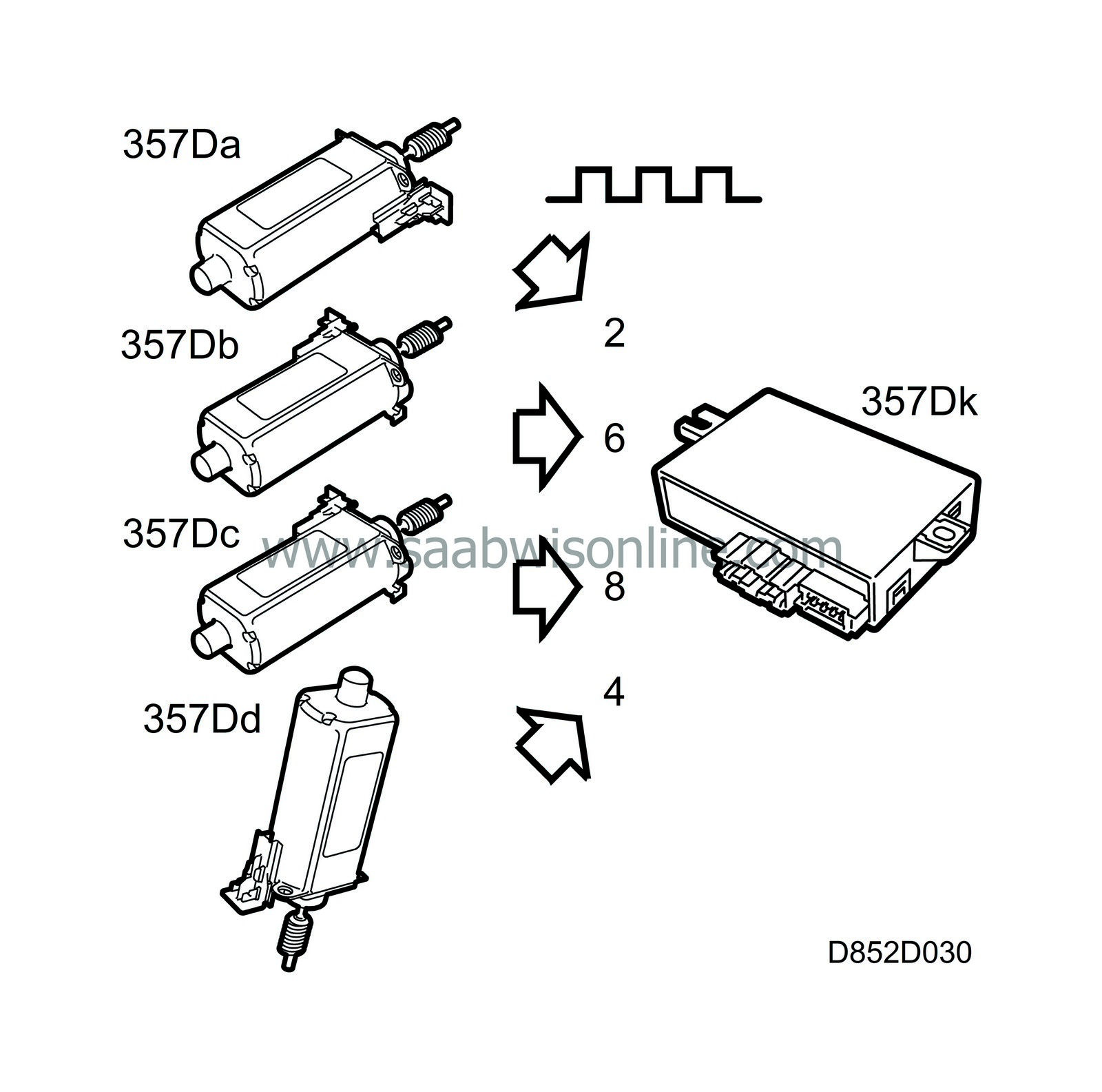Position sensor
| Position sensor |

The seat position sensors are Hall type and integrated in the motors for the respective functions.
On the motor shaft is a 2-pole magnetic ring (north/south). In the end of the motor is a Hall sensor, which detects changes in the magnetic field. When the motor is running, the magnetic changes occur twice per rotation. In this way, pulses are generated that the system uses to determine the position of the seat.
The control module supplies the sensor with 7 V through a resistor (100 ohm), mounted in the control module, from the pin on the motor concerned. The sensor is grounded internally in the control module. When the motor is running, the sensor detects magnetic changes whereupon the sensor grounds the pin on the motor via 392 ohm when the south pole of the magnetic ring passes.
The control module detects the voltage change between 7 V when the north pole passes and 5 V when the south pole passes.
The control module counts the pulses and therefore knows how long the motor must run for the seat to assume the desired position.
| Diagnostics |
If an open circuit/short circuit to B+ or ground should occur in the Hall sensor circuit, a diagnostic trouble code will be generated. The motor concerned, except for the backrest motor, can be operated for 500 ms.
One or more of the following DTCs are generated:
B2101 Motor, legroom adjustment
B2106 Motor, front seat edge
B2111 Motor, rear seat edge
B2116 Motor, backrest



